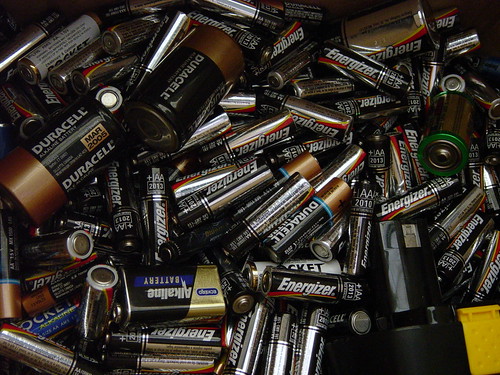
It’s a frequently unappreciated fact that the form factors of our mobile devices are largely driven by the batteries that power them. Not the shape so much, but certainly the bulk and the weight. If you don’t believe it, check out the teardown sequences on ifixit.com. The iPad is essentially a battery with a screen attached.
Most people with even a passing interest in technology have heard of Moore’s Law — the principle advanced by Gordon Moore in 1965 that computing power would roughly double every 18 months. The prediction has proven uncannily accurate. Substantially fewer people have heard of what has been described as Koomey’s Law, described in a 2011 paper by Dr. Jonathan Koomey:
…at a fixed computing load, the amount of battery you need will fall by a factor of two every year and a half
That’s impressive. In practice of course, computing loads in mobile devices have proven to be anything but fixed. The 3rd generation ipad has a much more capable processor than its predecessor, but much of that power is eaten up handling the much higher graphics processing demands of the retina display, so the device doesn’t seem that much faster. Add the battery demands of 4G and Apple’s (correct) insistence on generous battery life for users, and the new ipad ends up being just a hair thicker than the one that preceded it.
So if computing power is relentlessly and exponentially increasing, while power consumption is busy doing just the opposite, why are our devices staying roughly the same size? It’s largely about the stagnant state of battery technology. With mobile devices doing more and more, the gains in power efficiency are largely cancelled out by the demands for faster processors. Add in ever more powerful radio chipsets for Wi-Fi, Bluetooth, GPS and 4G, and it becomes surprising that smartphones can even maintain their current volumes, let alone get smaller. In many cases they haven’t — it’s no coincidence that 4G Android phones tend to have huge screens. It’s the only way to make the form factor appealing while accommodating the required battery bulk to service power-hungry 4G. It seems like the only way to make progress on the size of the devices would be to achieve some sort of Moore’s Law for batteries. Trouble is, it just isn’t happening. Basic chemistry and physics place real limits on what can be wrung out of lithium ion battery technology, and there is little else on the horizon, at the moment.
Tesla Motors Chief Technology Officer JB Straubel recently claimed that batteries for electric vehicles are improving at the rate of 7-8% per year, implying a doubling of efficiency every 10 years. That really caught my attention — finally some real progress, I thought. But, according to the Wall Street Journal:
“Improve” in this case means that a car can get more driving range per unit of battery weight, or the battery’s cost comes down while delivering the same range
This is a little different than the kind of efficiency I was thinking of. For mobile devices, cost is a lesser concern. Reduce the size by half and the market will be clamouring for the technology, regardless of price. Efficiency that delivers a less expensive battery is of limited interest for mobile devices, despite how important it is in the electric vehicle market.
It’s all about the batteries. There’s a huge research and development opportunity here for somebody — and an enormous pay-off for whoever cracks this nut.
Image by Flickr user moria
________________________________
Like this? More from the technology category.
Follow me on Twitter (@intudes) for interesting links and occasional observations.
Subscribe to the RSS feed, and don’t miss another post.